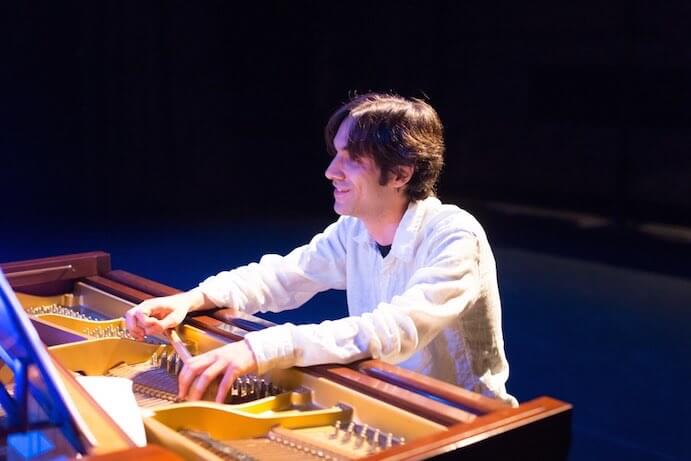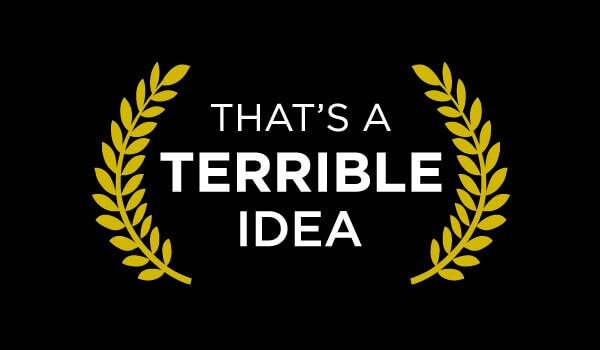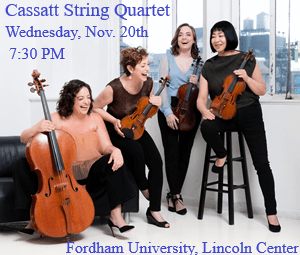When most people think of flourishing new music cities, Pittsburgh probably isn’t one of the first names that comes to mind. Pittsburgh New Music Festival artistic director Federico Garcia-De Castro and the rest of his dedicated team are trying to change that. The festival is a month-long series of events featuring both Pittsburgh locals and internationally recognized names. This year includes a music and film collaboration from Amy Williams and Aaron Henderson, a large-scale performance of Cornelius Cardew’s The Great Learning taking place over three days, and a free Firebird flashmob in the heart of the city, Market Square.
What was it like to play new music in Pittsburgh when you arrived to complete your PhD fifteen years ago, and what is it like now?
Yes, 2001… I came to the University of Pittsburgh, which focuses on the ‘theoretical’ part of music, with PhDs in Composition, Musicology, and Ethno. Pittsburgh has always been an attractive city for young performers who come to the other major universities (CMU, Duquesne) to study under the world-class musicians of the Symphony. But there wasn’t much connection between Pitt’s composition program and the other schools’ performance programs. Personally, I also fell in love with musicology, and for years I was more devoted to the study of music than to producing concerts of new music.
But in retrospect that was itself a reflection of the scarcity of public outlets for new music. The Pittsburgh New Music Ensemble had been running for 30 years–founded by Pittsburgh’s great pioneer David Stock–but by 2001 David was retiring, and the PNME was finding its way and soon became a summer series with concerts only in July. Great shows, but it did mean that there was less activity and mainly less programming flexibility. In effect, there were no professional outlets for composition in the city, especially by emerging composers.
Clearly there was a vacuum, which eventually started to fill. We founded Alia Musica–mainly as a composer consortium to create performance opportunities in 2006-2007–at the same time as the Eclectic Laboratory Chamber Orchestra, and soon after, the IonSound Project. It’s amazing to think of the contrast with today’s situation. There are around 7 ensembles doing new music in the city today, several of them exclusively. Initiatives spring up, some die out, and new ones come, but the level of activity is really high. In these 15 years, Pittsburgh has continued to see a cultural renaissance, which meant that young, curious people–among them composers and performers–have stayed and developed their careers here. And that has come with longer-term ambitions, mutual inspiration, cross-pollination, and all results in growing attention paid to new music by audiences, and from funders. For me it’s all great to see.
How was the idea for the festival born? And how long was the festival in the making before the first festival happened five years ago?
So already in 2012, we at Alia Musica started to feel an internal ‘contradiction:’ a large number of composers (and performers) we wanted to feature, but an opportunity and a need to continue elevating quality, which meant focusing resources (rehearsal time, performer pay, program length…). How could we feature everyone but without spreading ourselves too thin? Well, one answer was to have a marathon, inviting other new music ensembles, so that we still have to rehearse only one concert, but we can offer an opportunity to more people. In April of 2012, we partnered with the Kelly Strayhorn Theater, a historic theater in East Liberty in Pittsburgh, and had a two-day program, featuring the locals but also Tim Munro, Pamela Z, and others.
By late 2012, our network of collaborators was growing around the country. At that time, John Luther Adams’ Inuksuit (for 9-99 percussionists at a park) was making the rounds, even more than today, and we had our eye on it (Doug Perkins, THE Inuksuit guy, is a native Pittsburgher, by the way). And I got a call from Paul Pinto and New York-based collective Varispeed: they were working on a live-performance adaptation of Robert Ashley’s Perfect Lives. That was maybe September 2012. When Paul mentioned that one of the episodes happens (also) at a park, I saw the potential for how great a festival would be… I went to The Heinz Endowments (October?), got a significant grant for the idea, which opened other doors… and in the last week of May 2014, Alia Musica produced the Pittsburgh Festival of New Music in full, with seven events in the last week of May 2014, headlined by Inuksuit, Perfect Lives, and a recital by the great Fred Rzewski—but also involving other guests, and local ensembles, including my youth orchestra playing excerpts from The Rite (for which Rzewski said I was “a revolutionary”!!!).

Federico Garcia-De Castro
Can you tell me a bit about The Great Learning, and why it was included in the festival?
The Great Learning by Cardew is one of those epic pieces of the modern music canon, those that are conceived of more as an experience that you participate in than a performance that you watch. It is not as well known as In C, for example, but in a way it’s a similar thing. People who know about it appreciate it, and appreciate the news of it being performed; and people who happen to run into it as incidental audiences are in for a new experience that expands their understanding of what music can be, and of what all can be music.
The piece is written for many trained and untrained musicians, in seven paragraphs and a total duration of as much as 9 hours (The duration depends in part on the number of performers). Cardew was always uneasy about how music in the tradition of “Classical” music is bound to be an elitist endeavor, with the super-specialized training being a kind of bottle neck that effectively removed it from society. In The Great Learning and other late works, he found a way to write “for the people” in a truly organic way, not for the people to listen to but for the people to participate in. Musically, the piece has intimations of Webern’s pointillism, Reich’s phases, and Ligeti’s clouds of sound.
In recent years, TGL has been produced in New York by members of Mantra Percussion and in Austin by the Austin New Music Co-op. When we were starting to imagine plans for the festival in March 2015, Mantra Percussion was in Pittsburgh, premiering a piece by Mathew Rosenblum (written for them and Flux Quartet) at the Festival of Microtonal Music, and the idea of TGL came up. Eventually, it all circled around to percussionist Sarah Hennies, today based in Ithaca, NY, who was the common factor in those NY and Austin performances. TGL, in addition, had been a piece that Pittsburgh’s Eclectic Laboratory Chamber Orchestra had been thinking about doing for a while. Everything came together to collaborate in it as part of the PFNM 2016.
There’s so much room for audience participation in the festival – the pay as you exit program at bars and restaurants is designed to encourage discovery, and The Great Learning can include untrained musicians. Some of the events might draw in some participants who had no clue they were about to hear music! Had you had any musical experiences that inspired you to include so much interactive programming?
At this very moment, I’m preparing the first rehearsal for a flashmob of Firebird. With professionals, this time, joining one by one into the tutti in the Finale, all happening in the central Market Square. It’s part of the 2016 Festival. The experience of Inuksuit in particular (coupled with the unlikely fact Fred [Rzewski] came back to Pittsburgh to play his People United at a fish market in April 2013!) have had a great influence in my view of the relationship between the general public and music. They’re there, we’re here, box office numbers suggest we’re separated, but, again, they’re there. We don’t need to condescend, they’re not waiting for us to provide them with easy listening. In November last year, Ken Ueno came to perform his throat-singing concerto with us. Do we want music that’s more challenging than that? And people loved it, universally—twenty minutes into striking the stage out there was still a line of audience members wanting to say hi to Ken. The public doesn’t want us to condescend, they want us to challenge them. Or maybe even they’re waiting for us to challenge ourselves.
I realize the flashmob is very gimmicky too. But I think people’s curiosity about music is there, waiting to be piqued. The flashmob, and other events for incidental audiences in the 2016 Festival, is there to open that door.
What do you want people to be thinking as they walk away from the festival?
I’m hoping we pique people’s curiosity about new music, as I was saying. To make them realize that it’s a living language, that there’s stuff in it for everybody. I think not only the programmatic offering plays into this—sure, we have serious music and world-touring artists, big bios, and all that stuff. But in general, I want people to realize that new music is fun, that it can be a celebration, that it’s a community (in the geographic sense but also in the larger sense of the vibrancy and enthusiasm of the new music artists) who wants to share, rather than a series of lofty celebrities to be admired. If a couple of people find themselves surprised and feel welcome in the new music they see at PFNM, then that’s what we wanted.























